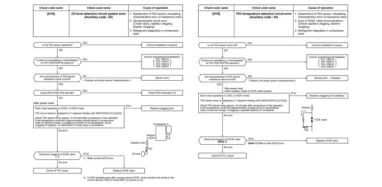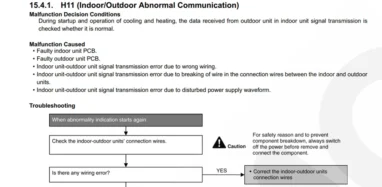The heat pump has gained too much popularity in recent years because of its comfort that comes with great convenience as well. Where a heat pump can work effectively during most of the winter season, it may not work to your requirements during the extremely cold days. If you ask a professional to give you a solution to this issue, he will surely recommend a dual fuel HVAC system. You may think, what is a dual fuel HVAC?
Well, it is an HVAC system that is a combination of a gas furnace and an electric heat pump. It keeps on changing or alternating from one fuel source to the other, eventually increasing its efficiency and power to provide more comfort and performance. Continue reading this article as it has a bunch of useful information that will help you make your life more comfortable.
How does a dual fuel HVAC system work
A dual fuel HVAC system working is not that difficult to understand but is a bit more complex than that of normal single fuel HVAC systems. A dual fuel HVAC system usually comes in two designs, a split system and a fully packed two in one system.
The cooling and heating performance of an electric heat pump is combined with the high efficiency of the gas furnace which can provide comfort in extreme temperatures. Dual fuel HVAC alternate from electric to gas and vice versa depending upon the weather conditions of the outside environment.
HVAC will only run an electric heat pump if there is mild cold and people can easily get comfortable with the normal amount of heat in the building. If the temperature goes too low and it comes to the point when you feel like freezing, the gas furnace will come into action with its maximum efficiency.
Is dual fuel HVAC worth it
Dual fuel HVAC systems are completely worth the price as they provide you with a bunch of benefits and conveniences. By investing in a dual fuel HVAC, you will enjoy the heat of a gas furnace along with the energy efficiency of an electric heat pump.
Dual fuel HVACs are probably the best and most efficient option when it comes to taking its benefits while living at a place where the temperature keeps on changing all seasons or sometimes within a single season as well.
How much does a dual fuel heat pump cost
Dual fuel heat pumps can be found in a price tag ranging from $3200 to $3800. The installation cost of these systems is just like installing a simple electric heat pump while the annual maintenance and repairing cost could be around $1000 to $2000. Maintenance costs can be mitigated by taking regular care of your system.
How to tell if you have a dual fuel system
Sometimes it becomes difficult for people to tell whether they have a dual fuel system or they are just using a simple one. Well, there are many ways to determine this and get rid of your confusion.
- The first step should be to look at a metal plate or paper sticker that is attached to the HVAC system. It has almost all the necessary information about the system.
- Look at the metal box that controls your HVAC system. It could be installed outside or inside of your home.
- Google the HVAC system brand along with its model number. There will surely be information on the internet about your HVAC system and whether it is single fuel or dual one.
- If you are unable to determine even after doing all the above-mentioned procedures, it is best to call a local HVAC system repairing company. They can tell you this in almost no time.
Dual fuel vs single fuel HVAC system
| Dual Fuel HVAC System | Single Fuel HVAC System |
| Uses two fuel sources, electricity and natural gas or propane. | Only have one fuel source, mostly electricity. |
| Energy-efficient as it changes two fuel sources which directly decreases the operating cost. | Using a single fuel source for a long time can make its performance a bit dull as a single component will work all the time. |
| Saves money in the long run. | Saves money at the time of purchase. |
| Can serve you in extreme temperatures even if it has fallen to the freezing point. | Can only work efficiently in semi-cold environments such as towns near the beach or mild weather conditions. |
| Can cost you somewhere from $3200 to $3800 depending upon their size and capacity. | Can be bought cheaply at the price ranging from $1800 to $3200. |
Pros and cons of dual-fuel heat pumps
| Pros of Dual Fuel Heat Pumps | Cons of Dual Fuel Heat Pumps |
| The gas portion of the HVAC system only works when the temperature is too high, which protects you from bearing huge gas bills even when you don’t need a high level of heat. | Some dual fuel heat pumps are programmed in a manner that the user cannot set temperature. Such kinds of pumps can waste energy as they may keep on burning the gas even if it is not required. |
| Uses a minimum amount of electricity due to a set temperature setting. | They usually come with relatively high price tags as compared to simple heat pumps. |
| Dual heat pumps can provide you with your desired temperature as fast as any other HVAC system or air conditioner can do. | As it is new in the market, it may become difficult to find its technicians in some regions. |
| It has a huge lifespan due to its high build quality. |
Dual fuel heat pump temperature setting
- You can look at the dual fuel HVAC publications as there will be the best suitable temperatures mentioned according to the break-even COP. So firstly, you need to find break-even COP whose equation is: BECOP = (E x C x L x e) / G, where:
- E is the electricity bill divided by the kWh used.
- C is the value of kWh divided by therm.
- L is the therms divided by the CFF of the natural gas or propane being used in the system.
- “e” is the efficiency of your furnace.
- G is the value derived by dividing the electricity bill by the CCF of natural gas.
- Now by putting all these values in the equation of BECOP, you will get a resultant value.
- Compare this value of BECOP on HVAC publications to see which temperature is best for you.
- Suppose the value of BECOP is 3.24, the dual fuel heat pump’s best suitable temperature will be about 40 degrees.
Do keep this fact in mind that this value can vary on different HVAC systems, so you should see the publications for comparison purposes.
Dual fuel heat pump installation
- Start by demolishing or removing the existing furnace or air handler from the dust work so that you can run a dual fuel heat pump without any issues.
- If you have a split system, you need to install it just like an air conditioner of any other HVAC system but if you have a packaged one, it is more than easy.
- Simply connect the system with the ductwork and plumbing.
- Use mastic and other procedures to seal the duct properly.
- Place the dual fuel pump at the best suitable place in your house where all suction and other operations can be performed.
- Creating a base for dual heat pumps is recommended as it will bring more efficiency to the product.
More resources:


